In the ever-evolving digital landscape, product reviews have secured a crucial spot.
They serve as an invaluable tool to connect potential consumers with products or services that meet their needs.
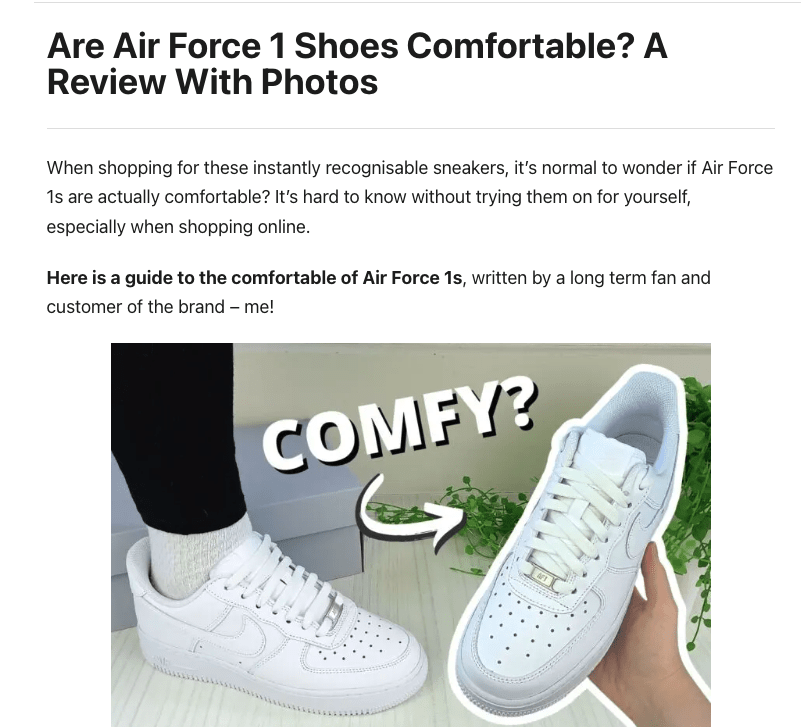
They are also a robust way for bloggers to monetize content in the form of affiliate marketing.
Writing product reviews, when done right, has the power to inform, influence, and inspire purchase decisions.
They give voice to our experiences, lay bare the advantages and shortcomings of a product, and most importantly, help guide the purchasing decisions of our readers.
As bloggers, our reviews can create a strong sense of trust and authenticity, which in turn can build a loyal readership.
But how can product reviews translate to income, you might ask?
The answer lies in affiliate marketing, a practice where you earn a commission for every product sold through a link on your blog.
By crafting comprehensive, honest, and engaging reviews, you can direct traffic to these products, leading to increased affiliate sales and revenue for your blog.
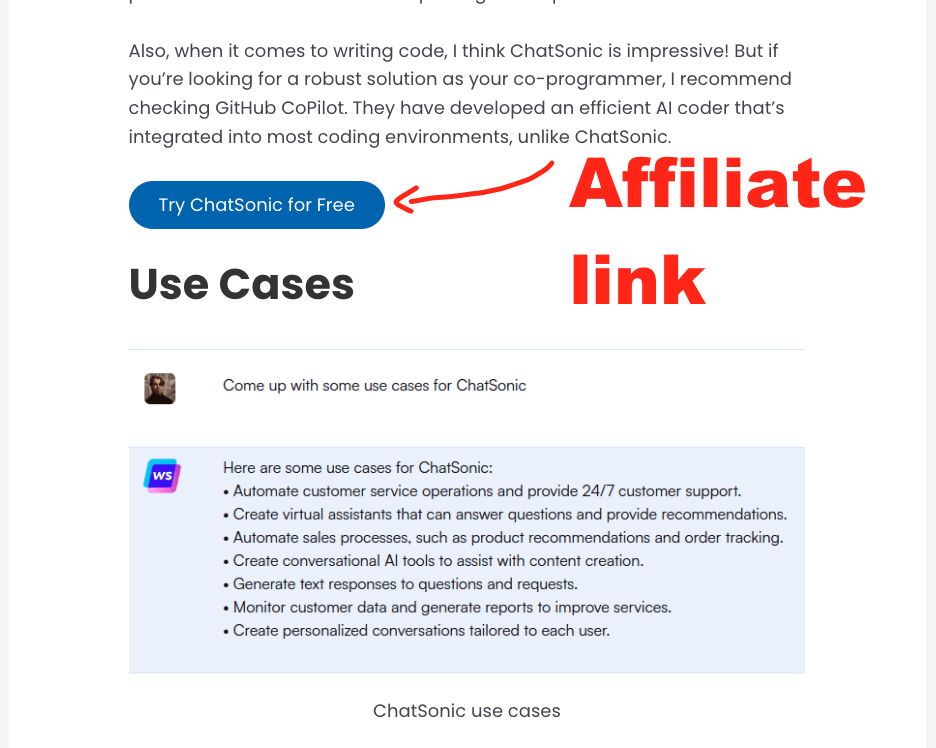
Writing an effective product review isn’t a skill you acquire overnight.
It requires an understanding of your audience, a knack for storytelling, and a careful balance between marketing and providing valuable content.
The objective of this blog post is to provide you with a comprehensive guide to writing impactful product reviews that don’t just sell but also add value to your readers’ lives.
So, whether you’re just starting your blogging journey or looking to refine your review-writing skills, this guide aims to provide practical, actionable tips to help you excel in this endeavor.
Let’s jump into it!
Selecting the Product
The first step in the journey of writing a captivating product review is selecting the product itself.
You might think it’s as simple as picking any item off the shelf, but there’s more to it.
Here are some tips on choosing the right product to review.
#1 Understand Your Audience
Before choosing a product to review, it’s important to understand your audience’s preferences and needs.
Analyze your audience demographics, interests, and typical challenges or problems.

The product you choose should be relevant to your readers and something they would consider buying.
#2 Select a Product You’re Passionate About
Writing a review becomes easier and more enjoyable if you’re genuinely interested in the product.
Try to choose products that you’re passionate about, and your enthusiasm will naturally shine through your writing, making your reviews more engaging.

Notice that it’s not always possible to choose a product you’re 100% passionate about. That’s fine, but make sure it’s at least something your audience would find super useful.
#3 Choose Products Related to Your Niche
Every blog has a niche.
Stay consistent with your blog’s theme when choosing products to review.
If you run a tech blog, reviewing the latest software or gadget makes sense.
If your blog revolves around parenting, baby products or educational toys could be your thing.
The key is to maintain coherence in your content.
This is just common sense. If you have a blog about urban gardening, it doesn’t make sense to review crypto trading platforms.
You can even use Google suggestions to see what people search for in a particular niche.

#4 Aim for New Trendy Products
Reviews of newly launched or trending products often attract more traffic.
This happens for two reasons:
- New products that are trending get a ton of searches on Google.
- There are no competing reviews in the search results.
Keep an eye on market trends, upcoming product releases, and popular items to stay relevant and timely.
You can use Google Trends to figure out to follow and figure out new trends.
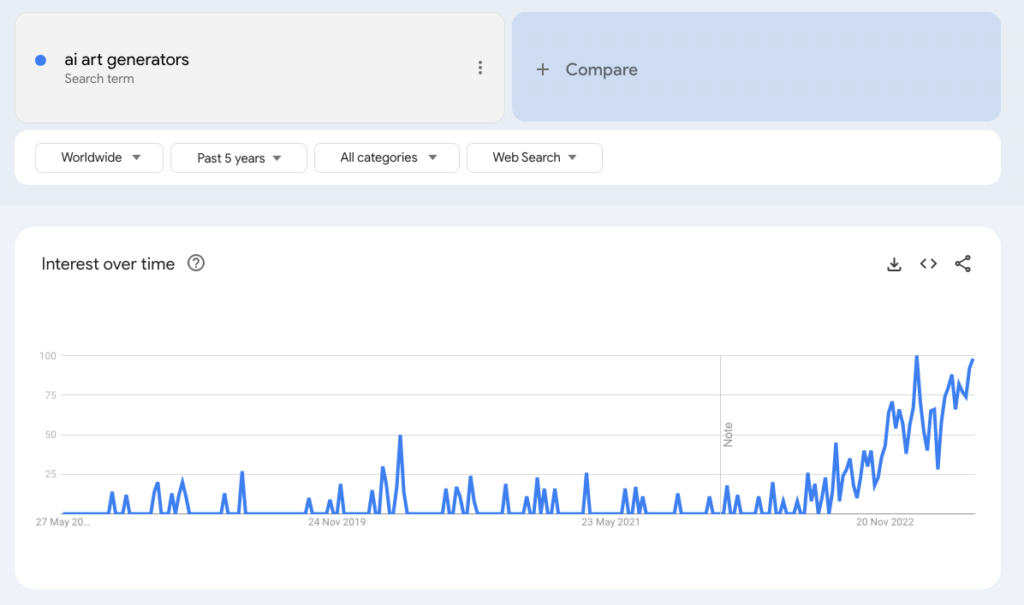
My best-performing reviews are always about products that are less than 12-24 months old and that have started trending recently.
#5 Consider the Product’s Market Potential
As a blogger intending to make money through affiliate sales, the product’s market potential is important.
Choose products that have a demand and are likely to be purchased by your readers.
For example, if a product or service should be free, it might not be effective to promote a paid product.
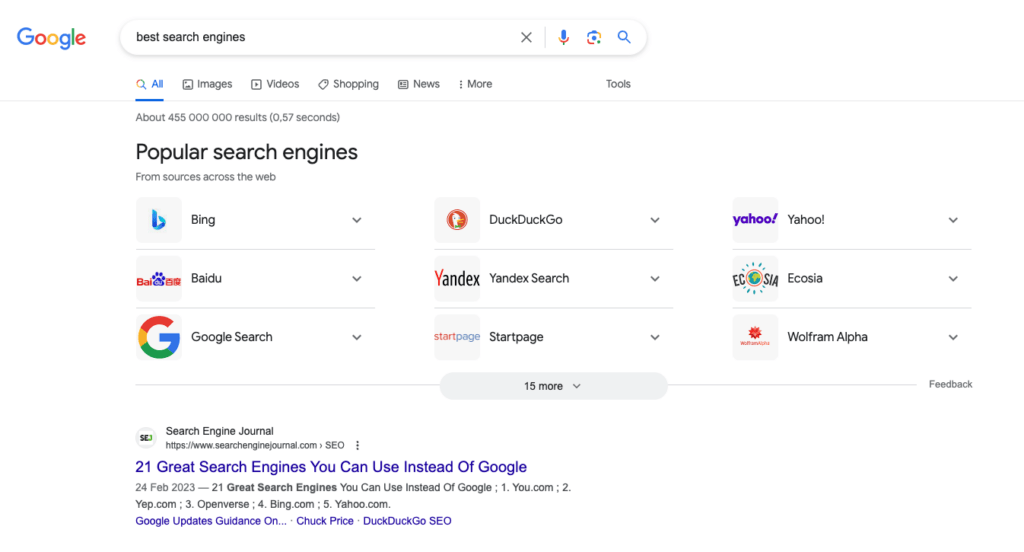
In the software space, this is quite common. For example, most search engines are 100% free. If there was a paid search engine, it could be really hard to get paying customers with great free alternatives.
#6 Review Products with Affiliate Programs
This one’s a no-brainer.
To make money from your reviews, review products that are part of an affiliate program.

However, remember to balance your potential earning with the product’s relevance to your audience. Don’t choose bad products that offer good affiliate commissions.
Why Only Review Products You Love
Navigating the world of product reviewing requires authenticity and credibility.
One of the fundamental elements of this process is to only review products that you have used personally, or at the very least, have conducted extensive research on.
We already discussed this a bit in the previous section, but let’s take a closer look at why this really matters.
#1 Establishing Trust
The primary reason for only reviewing products you have used or know a lot about is trust.
As a blogger, your greatest asset is the relationship you have with your audience.
They trust your opinions, trust your expertise, and most importantly, trust that you have their best interests at heart.
Reviewing a product that you haven’t used or know little about can break this trust. It just makes your site look “salesy” and greedy.
Readers can usually tell if a review is based on actual use or just speculation.
If they sense that you’re not being completely truthful, they might lose confidence in your recommendations and question the authenticity of your future reviews.
#2 Offering Valuable Insight
Using a product allows you to provide detailed insights that can’t be found in a product description or manufacturer’s specifications.
You can share your personal experience, talk about the product’s features from a user’s perspective, and discuss any issues you encountered.

This kind of information adds significant value to your review and helps readers make informed buying decisions.
By the way, this is not only good in the eyes of your audience but also in search engines.
To write a review that ranks high on search engines like Google, you need to add something new to the internet.

If you just repeat what’s already been told, you’re not going to make it.
#3 Encouraging Engagement
When you share your personal experiences with a product, it encourages your audience to engage with your content.
They may ask questions, share their own experiences, or provide feedback.
This interaction not only fosters a sense of community but also provides you with more content ideas for future posts.
Also, it strengthens the community and only makes your blog have a stronger standing in search engines.
I hope this clarifies why it’s crucial to only review and recommend products you truly believe in.
Review Niche-Specific Products Only
Another cornerstone of writing effective product reviews is ensuring that the products you select are relevant to your blog’s niche and, by extension, your audience.
For example, I’ve written a ton of AI writing tool reviews on this blog. They help bloggers and content creators understand what are the best AI assistants on today’s market.
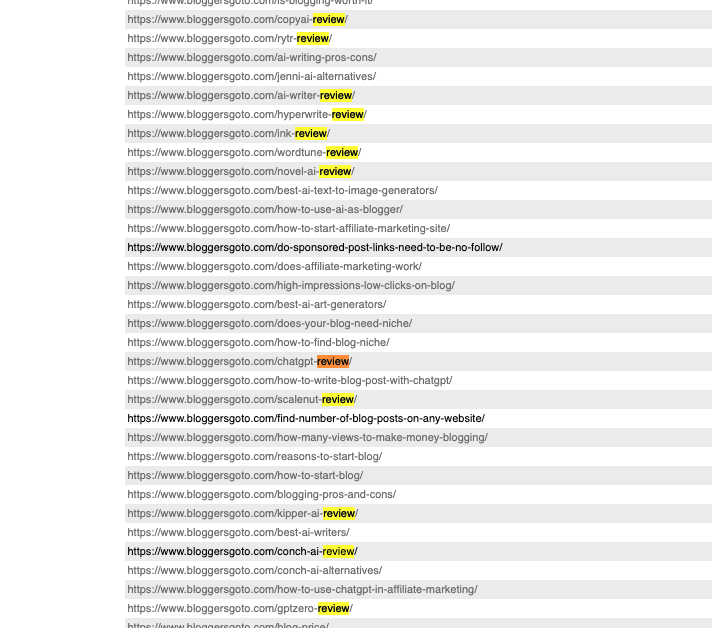
The relevance of the product to your specific niche is an essential aspect of product selection.
This is also something we’ve briefly discussed above, but let’s take a closer look at why this truly matters.
#1 Maintain Interest
Your audience follows your blog because they are interested in a particular niche.
Whether it’s technology, fashion, health, or any other topic, they look to you for insights and recommendations in this specific area.
By reviewing products that are pertinent to your niche, you cater to your audience’s interests and expectations.
#2 Building Expertise
Becoming a successful blogger is all about establishing yourself as an authority and trusted resource.
When you focus on reviewing products in a particular niche, you gradually build up expertise in that area.
With each review, you deepen your understanding of the products, trends, and audience needs within this realm.
This expertise will shine through in your reviews, making them more insightful and credible.
#3 Increasing Affiliate Sales
Products that align with your blog’s niche are more likely to generate affiliate sales.

Let’s say your blog is about gardening, and you review a gardening tool, your readers are more likely to purchase it because it’s relevant to their interests and needs.
On the other hand, reviewing an unrelated product like a VPN, may not resonate with your audience and will lead to significantly lower affiliate sales.
#4 Attracting Potential Partnerships
Companies and brands are more likely to collaborate with bloggers who have established themselves within a specific niche.
By consistently reviewing products related to your niche, you demonstrate your influence in this area, which could attract potential partnerships and sponsorships.

Maybe a competing product approaches you and wants to form a deeper partnership with you. 🙂
Research and Testing
Writing a product review goes beyond surface-level observations.
It involves a deep understanding of the product, its features, benefits, and potential drawbacks.
The only way to rank high with a product review is to write the best review on the entire internet.
All of this comes from two critical processes: research and testing.

Why Do Product Research
Let’s take a look at the importance of product research and how to do it.
#1 Ensuring Accuracy
Researching a product ensures that the information you provide in your review is accurate.
From product specifications to its usage, you must double-check all details.
This includes information about the manufacturer, the product’s history, any related product recalls, or user testimonials.

Accuracy builds credibility and trust with your readers.
#2 Providing In-Depth Information
A comprehensive product review requires you to dig deep and provide more than just the manufacturer’s description.
When you research, you can explore the technology behind the product, how it compares to other similar products in the market, its unique selling points, and more.
The more detailed information you provide, the more useful your review is to your readers.
#3 Addressing User Concerns
By researching extensively, you can address potential concerns or questions that users might have about the product.
Look for frequently asked questions or common issues associated with the product.
Your review should aim to answer these queries and provide potential solutions to problems.
#4 Identifying Pros and Cons
Through research, you can objectively evaluate the pros and cons of a product.

Every product has its strengths and weaknesses, and your review should fairly represent these.
Knowing the product in-depth can help you strike a balance between praise and criticism.
#5 Enhancing Credibility
Thorough research enhances your credibility as a reviewer.
It shows your readers that you’ve put effort into understanding the product and its context.
This commitment to quality and authenticity can make your reviews more influential and impactful. It also helps you rank higher on Google and other search engines.
Now that you understand why it’s important to do product research, let’s take a look at how you can gather information about the product.
How to Collect Product Information
When writing a product review, one must employ a multi-faceted approach to gather all the necessary information.
This not only includes using the product yourself but also researching various credible sources.
Let’s delve into the different sources and methods for gathering information for your review.
Tip #1 Manufacturer or Product Websites
The product or manufacturer’s website is usually the first place to visit for accurate and detailed information about the product.
Here, you can find technical specifications, product descriptions, usage instructions, and other key details.
Some websites may also have FAQs or user manuals that provide additional insights.
By the way, Google also puts together FAQ or “People Also Ask” sections you can use.
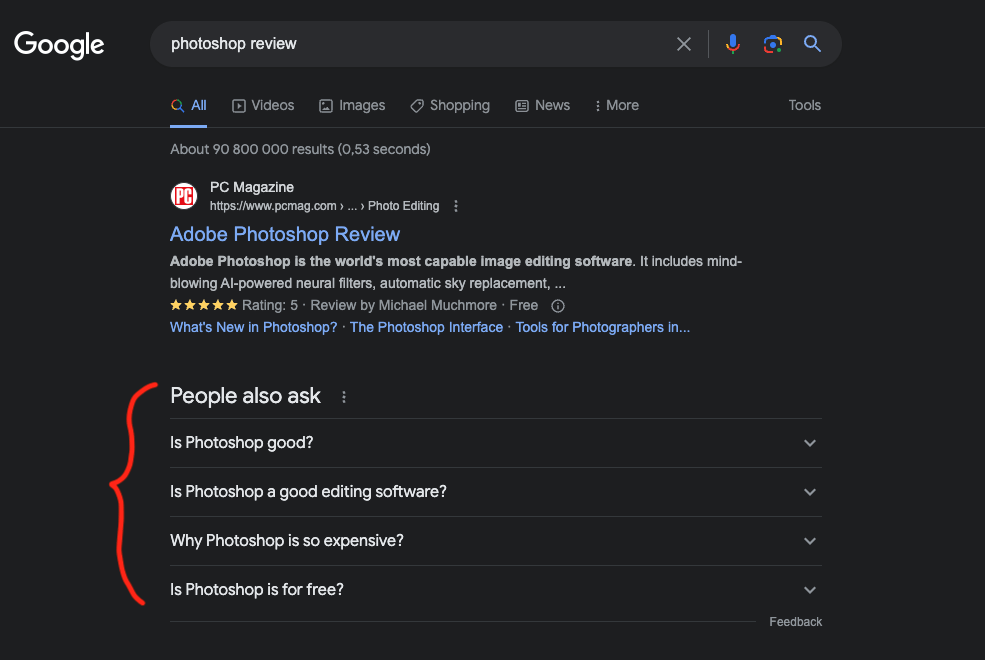
Tip #2 Customer Reviews
Customer reviews, whether on the product website, online stores, or forums, can provide a wealth of information.
They reveal real-world experiences and issues faced by users, which might not be obvious from just using the product yourself or reading the product description.
Look for patterns in the feedback.
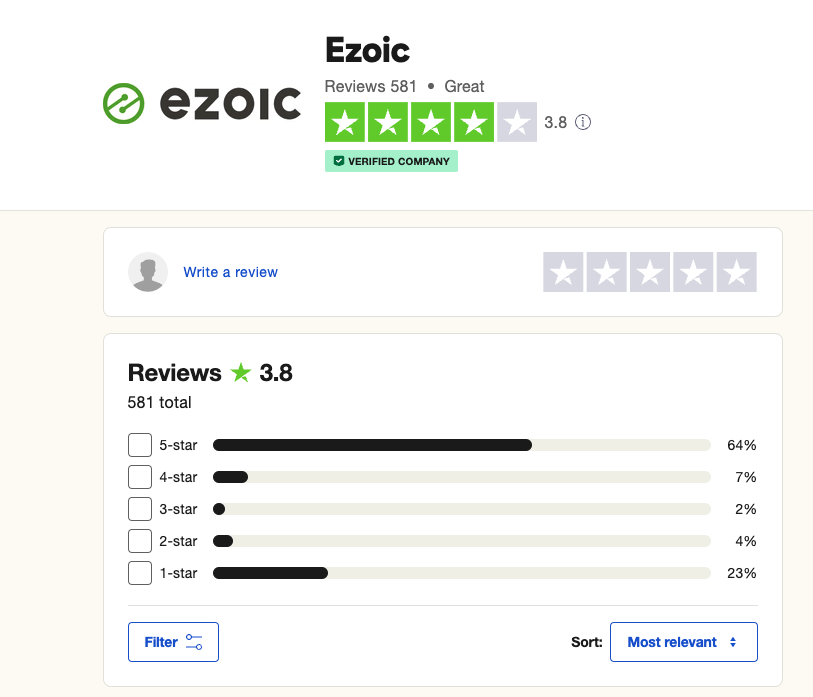
If many people are praising or complaining about the same thing, it’s likely a valid point to include in your review.
Tip #3 Personal Testing
There’s no substitute for hands-on experience.
Using the product yourself allows you to understand its functionalities, performance, and usability firsthand.
Personal testing enables you to write about your experience, adding a subjective layer to your review that resonates with readers.
Tip #4 Competitor Comparison
Researching similar products or direct competitors can provide valuable insights.

It allows you to compare features, prices, and user reviews, enabling you to position the product you’re reviewing in a broader market context.
This can help readers understand how the product stacks up against its competition.
Tip #5 Social Media and Online Forums
Social media platforms, online forums, and discussion groups can be valuable sources of information.
These platforms host discussions, user experiences, and even expert opinions about products.
Websites like Reddit or platforms like Facebook Groups can offer unfiltered user opinions that can add depth to your review.
If you solely rely on reviews found on Google, they might be biased.
This is because if a product pays a good affiliate commission, it might be tempting to make a bad product good to make more money.
Imagine a company paying you $100 for every sale.
If you write a positive review of the product, you might make thousands of dollars a month. But if you wrote a negative review, you won’t make anything.
Thus, I recommend reading honest reviews on sites like Trustpilot, Reddit, Quora, etc. And double-check that those aren’t affiliates promoting the products.

The Importance of Testing Products
While research and information gathering are fundamental steps in writing a product review, they only form part of the picture.
Personal experience and testing the product you’re reviewing are equally, if not more, important.
Here are some reasons why the most effective product reviews include own experiences with the products.
#1 Personal Insight
Testing a product gives you first-hand experience that no amount of third-party research can replicate.
You can interact with the product, and understand its features, benefits, and drawbacks. All of this helps in crafting a comprehensive review.

Your personal insights and experiences can breathe life into your review, making it relatable and engaging.
#2 Authenticity
Your audience trusts you for your honesty and authenticity.
When you share your personal experiences with a product, it reflects that you’re not just blindly promoting it but have actually taken the time to use and evaluate it.
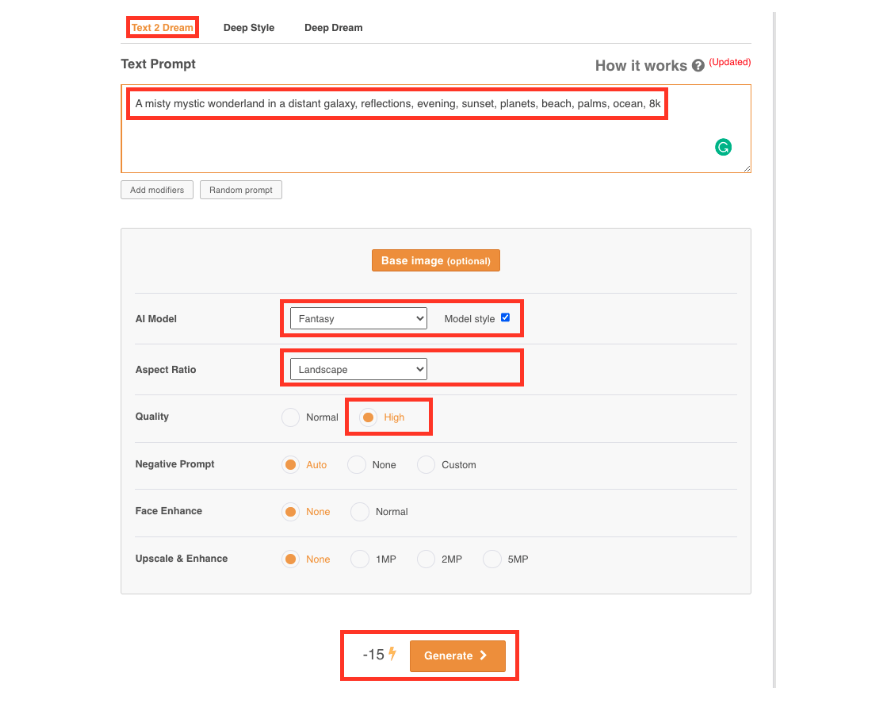
This not only adds authenticity to your review but also strengthens your credibility.
#3 Addressing Practical Aspects
Using the product allows you to address aspects not mentioned in the product’s description or customer reviews.
For instance, you might find that a product is particularly easy or difficult to use, or that it has a design flaw that only becomes apparent with use.
These practical insights add tremendous value to your review.

Pointing out these also adds value and new insights to the internet. This helps you rank higher.
#4 User Experience
No two users’ experiences with a product are the same.
By using the product, you can share your unique user experience. This can include everything from your initial impressions to how the product performs over time.
This user experience perspective can give your readers a realistic idea of what to expect from the product.
#5 Product Demonstration
If your review includes pictures or videos, testing the product allows you to show it in action.
This is more convincing than just describing the product’s features. A product demonstration also provides visual proof that you’ve actually used the product.

This makes good content for your review.
Adding unique and original images that show the product in action is a tremendous way to demonstrate experience with the product.
Now you should have a solid understanding of how to gather information about products for your reviews through testing and review.
Next, it’s time to take a look at how to format the review posts in an enjoyable and easy-to-read format.
Structuring a Product Review
Creating an organized and easily digestible structure for your product review is crucial.
It guides your readers through your analysis and allows them to quickly find the information they need.
Here’s a great product review structure you should follow:
- Introduction
- Key features
- Personal experience
- Pros and cons
- Similar products/alternatives
- Final verdict
Let’s take a closer look at these talking points.
1. Introduction to the Product
Your review should start with an introduction to the product.

This should include what the product is, who it’s designed for, and a brief overview of what it promises to do.
Also, this is a great place to add an image of the product for the first time.
Your introduction sets the stage for the rest of the review, giving readers a context in which to understand your subsequent analysis.
You can also share why you chose to review this product or a brief overview of the manufacturer if relevant.
2. Key Features and Specifications
List and explain the product’s key features and specifications. It can be a bulleted list of features.

This includes everything from its size, weight, and materials, to its functions and capabilities.
Be as detailed as possible, but remember to keep your explanations straightforward and accessible.
You can find this information on the manufacturer’s page, usually on a landing page.
3. Personal Experience and Impressions
Next, dive into your personal experience with the product.
Discuss how you used it, your first impressions, and any changes in your opinion over time.
Talk about the practicality of the product’s features, its usability, and any issues you encountered.
Your personal experience is what makes your review unique, so don’t hesitate to share your thoughts, whether they’re positive or negative.
I usually simply name this section “My Experience”.
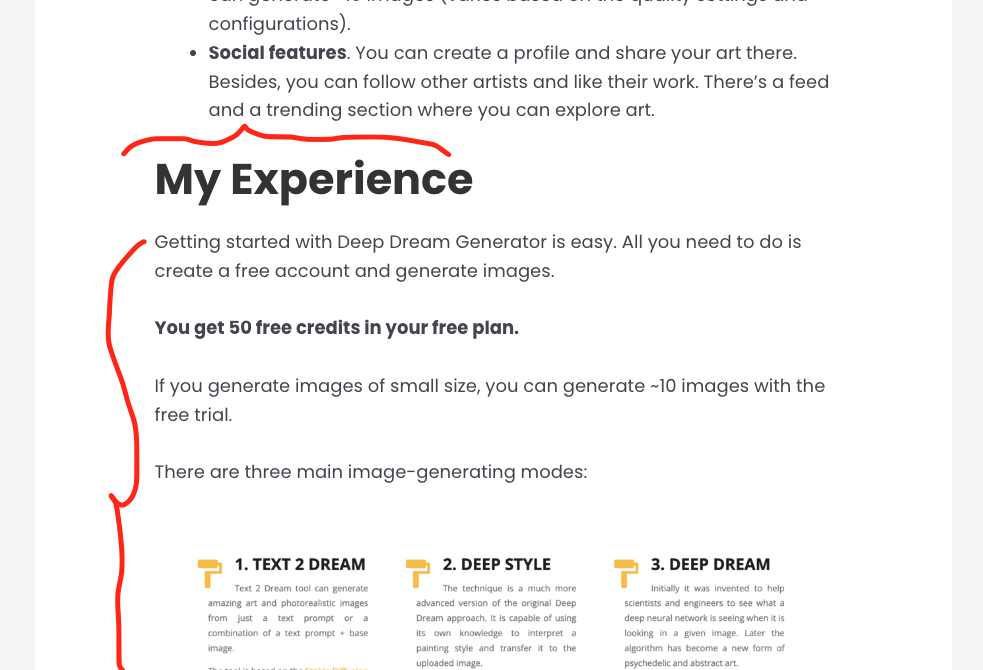
4. Pros and Cons
Once you’ve covered your personal experience, lay out the product’s pros and cons.
This section provides a clear and concise summary of the product’s strengths and weaknesses, making it easy for readers to weigh the benefits against the drawbacks.
Be objective and fair, and always base your points on concrete evidence from your personal experience or research.
You can add a basic table of pros and cons that are no longer than a couple of words in length.
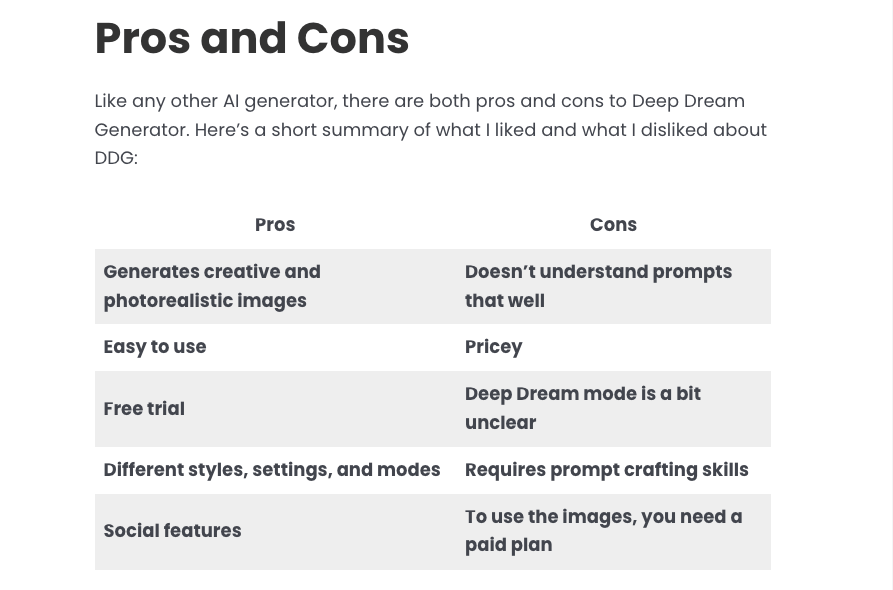
Also, you can make it a comprehensive section where you talk about the pros and cons in much greater detail.
I use both depending on the competition.
Sometimes short sections are good but sometimes you need a much better analysis.
5. Comparison to Similar Products (Optional)
If possible, compare the product you’re reviewing to similar products on the market.
This can give your readers a better understanding of where the product stands in relation to its competition.
Discuss the similarities and differences in features, performance, and price, and highlight any factors that make the product stand out.
This doesn’t necessarily need to be a section of its own. You can just briefly mention something like “Unlike to [competitor], [this product] offers a 30-day free trial” etc.
6. Final Verdict
Finally, wrap up your review with your final verdict or recommendation.
Would you recommend the product to your readers?
If so, who would benefit most from it?
If not, why not?

This is your chance to summarize your thoughts and provide clear advice to your readers.
Remember, the goal of your review structure is to guide your readers through your thoughts in a logical, easy-to-follow way.
Keeping your review organized and focused can make it more effective and enjoyable to read.
Now that you know how to structure your product reviews, let’s discuss the writing style and tone of voice to keep the readers engaged.
7. Format the Post Nicely
Using headings, subheadings, and bullet points can significantly improve the readability of your review.
These elements help to break up your content into digestible chunks and allow readers to quickly scan for the information they need.
Also, adding images is crucial for an effective product review. As a matter of fact, visuals are such an important part of a product review that there’s a separate section for it below.
Remember, people are busy. Not everyone has time to read a 15-minute product review from A to Z. Instead, they might want to read parts of it.
An easy-to-skim blog post is a perfect fit for both busy and not-so-busy readers.
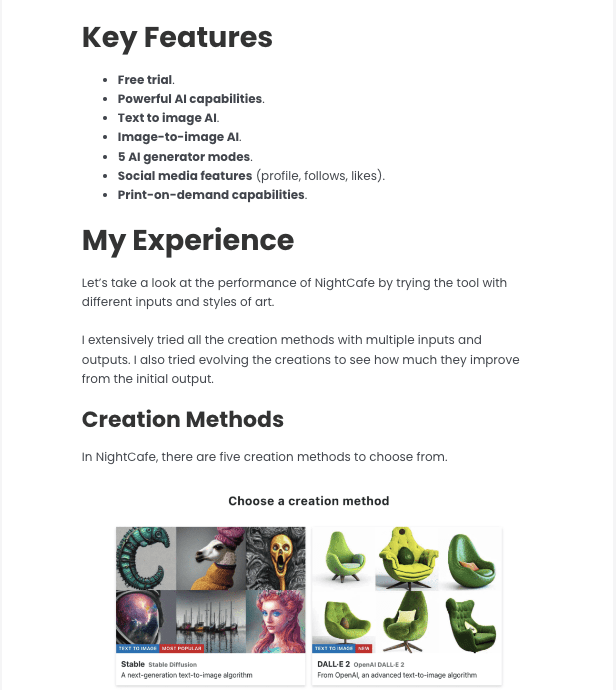
Incorporating Visuals
Images and visuals can significantly enhance your product reviews, making them more engaging and informative.
They provide a visual representation of what you’re describing and can help to break up large blocks of text, making your review more reader-friendly.
The Value of Including Images
Visuals can add value to your review in a multitude of ways.
They provide a quick overview of the product, offer proof of your personal experience, and can demonstrate the product’s features or functionality.
Seeing is believing, after all.
Images or videos can also make your review more engaging, adding a dynamic element that can capture your reader’s attention.
Types of Visuals for Improving Reviews
Different types of visuals can be used to illustrate various aspects of the product.

Here are some examples:
- Product Images: Photos of the product from different angles, highlighting key features, and even the product’s packaging can give readers a better sense of what to expect.
- Screenshots: If you’re reviewing a digital product like software or app, screenshots can be extremely helpful. They can show your readers the product’s interface, how it works, and what features it offers.
- Demonstration Videos: Videos where you demonstrate the product in use can be powerful. They allow readers to see the product in action, how it functions, and its performance.
Tips for Capturing Visuals
Whether you’re taking your own pictures or embedding visuals from other sources, quality matters.
However, studio quality is not needed here.

As a matter of fact, the images and visuals should be relatable and have an amateurish look to them to be more effective!
They can look as if they’re taken in action by a mobile device.

Here are some tips to ensure your visuals are effective:
Lighting is Key: When taking pictures or recording a video, ensure you have good lighting. This will help highlight the product’s details and make the visual more appealing. Remember, you don’t need studio lighting. Just keep in mind that the image should be clear.
Focus on the Product: Your visuals should focus on the product and its features. Avoid clutter or distracting backgrounds.
Embed Responsibly: If you’re embedding images or videos from other sources, always make sure you have the rights to do so, or that the material is available under an appropriate Creative Commons license. Always credit the source of the material.
Writing Style and Tone
Last but not least, the way you write your product review plays a crucial role in its effectiveness.
The writing style and tone of voice can influence how well your readers understand your points, how engaged they feel while reading, and ultimately, how much they trust your review.
Let’s look at some aspects to consider in defining your style and tone:
1. Balanced and Unbiased Tone
In product reviews, maintaining a balanced and unbiased tone is paramount.
Readers value reviews that fairly present the pros and cons of a product.
Remember, even if you’re a partner with the product you’re promoting, this is not a sales pitch!
Your partner won’t get mad if you mention bad things about the product. It’s only showing you’re honest.

No product is perfect.
It’s only shady if a product review says “There are no bad things about this product”.
Avoid overly promotional language or excessive criticism without substantiated reasoning.
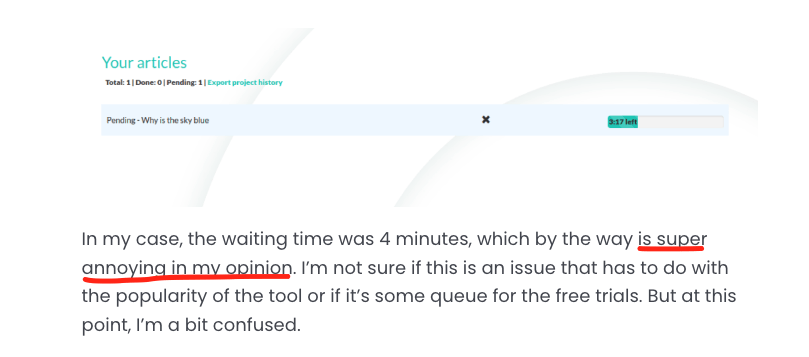
An unbiased review doesn’t mean you can’t have an opinion; it just means your opinion should be based on facts and honest experiences, not favoritism or prejudice.
2. Clear and Concise Language
Keeping your language clear and concise makes your review easy to read and understand.
Avoid technical jargon unless necessary, and if you do use it, always provide an explanation.
Break down complex ideas into simpler terms.
Like with any other blog post, you should write so that a kid can understand. This is no different from product reviews.
Don’t try to outsmart your readers. They will go away!
Remember, your readers may not be familiar with the product or its technology, so it’s your job to make your review accessible to a broad audience.
3. Examples and Evidence
Whenever you make a point about the product, try to back it up with examples.
If you mention that a product is durable, explain why you believe so.
Did it survive a fall?
Did it function well even after prolonged use?
Providing specific examples enhances your credibility and makes your review more convincing.

Remember, the style and tone of your review can greatly impact its effectiveness.
A balanced, unbiased tone, clear language, personal stories, and specific examples are elements that can make your review not just informative, but engaging and trustworthy too.
Always consider your audience when deciding on your style and tone; your review should resonate with them and meet their needs.
Finalizing the Review
Once you’ve written your product review, it’s not quite time to hit publish yet.
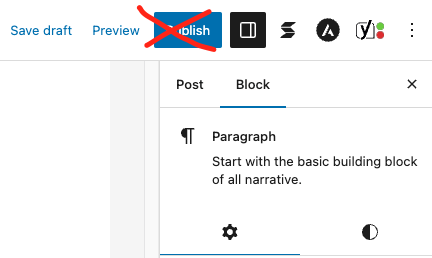
It’s crucial to take some time to finalize your review—proofreading and editing it, ensuring its honesty and transparency, and even seeking feedback if possible.
Before publishing your review, it’s essential to proofread and edit it for clarity and correctness.
Look for any typos, grammatical errors, or awkward phrasing.
Make sure your sentences are clear and concise, and that your review flows logically from one point to the next.
Check to see if you’ve provided enough context for your points to be understood, and if your review is comprehensive and fair.
Wrapping Up
Writing a high-quality product review is a process that involves consideration, research, and a desire to inform and assist your readers.
We’ve walked through the various steps of creating an engaging and informative review, from choosing the right product and conducting thorough research to structuring your review.
Remember, the best product reviews are those that not only provide an in-depth examination of a product but also connect with readers in an authentic and engaging way.
They answer pressing questions, address concerns, and provide real-life insights into the product’s performance.
As a blogger, your product reviews have the power to influence your readers’ purchasing decisions and can significantly enhance your credibility and trustworthiness in your chosen niche. 🙂
Moreover, they can be an effective avenue for monetizing your blog via affiliate marketing.
Just as every product is unique, so too is every review.
Don’t be afraid to infuse your personality into your writing, share your unique experiences, and let your authentic voice shine through.
Above all, maintain a commitment to honesty and transparency.
Your readers rely on your objectivity and honesty to make informed decisions. Upholding these values won’t just earn you the respect of your readers, but it will also set your blog apart in the world of online product reviews.
Happy reviewing! Your journey into the rewarding world of product reviewing awaits.
